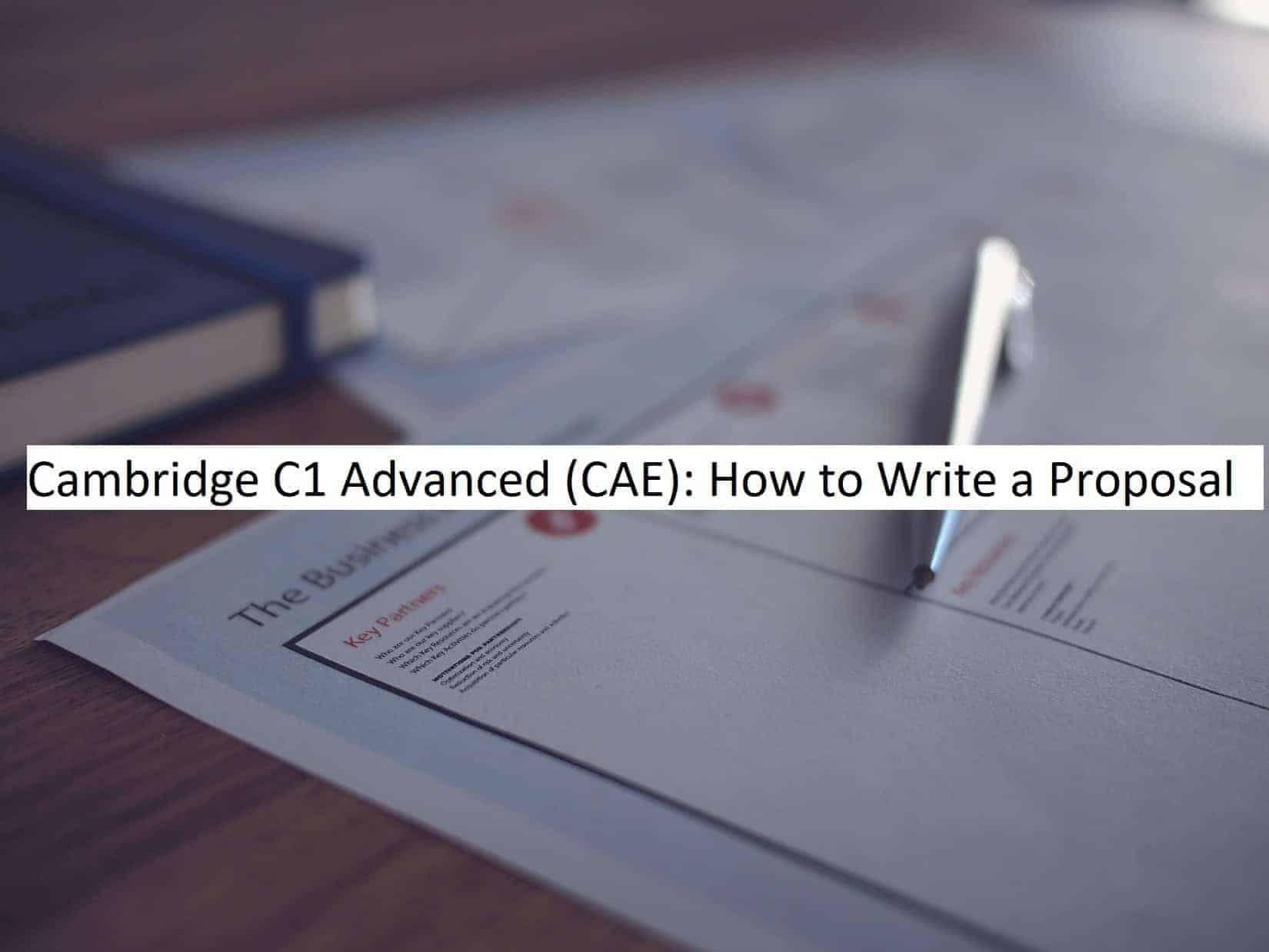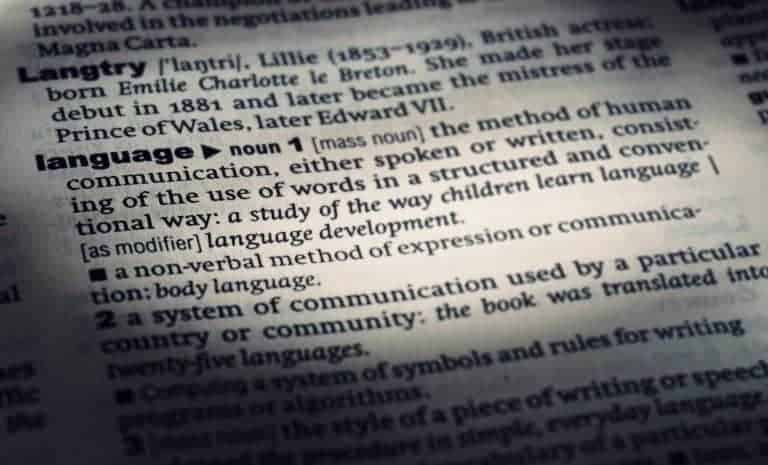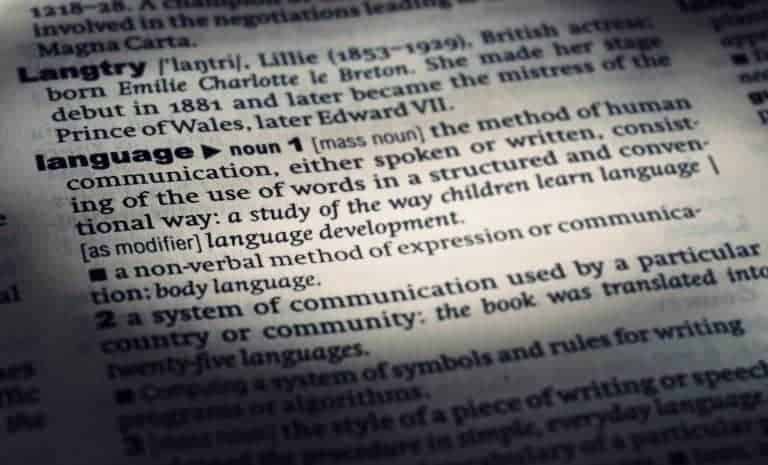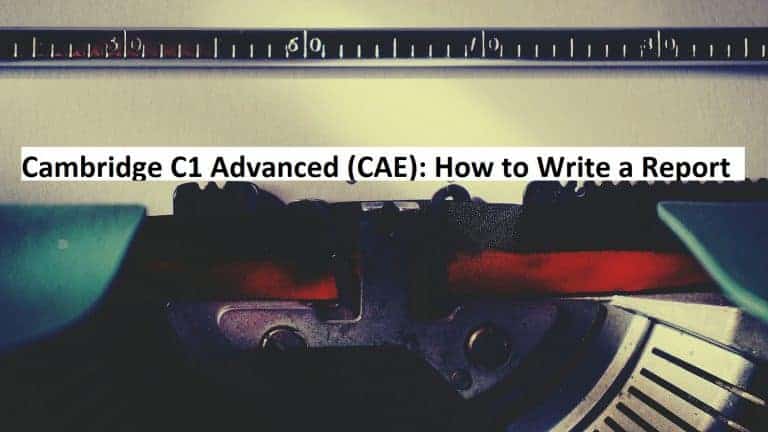Introduction
A proposal may be written for a peer group (such as colleagues or club members), or for a supervisor (such as a boss or a college principal). Candidates will be expected to make one or more suggestions, supported by factual information and evaluation, in order to persuade the reader of a course of action. Students should work on functional language for evaluating and for making suggestions, and will need to be able to use a range of persuasive language.Source: Cambridge English C1 Advanced handbook for teachers
Proposals are part of the section section of the C1 Advanced Writing paper. While the essay task in the first section is mandatory, you can choose if you want to write a proposal or not as you get other options (email/letter, review, report).
What a proposal really is
I’ve seen many students who get a little bit scared when it comes to writing a proposal for C1 Advanced. They’ve often finished their B2 First course and/or exam and the problem really is that there are no proposal writing tasks in FCE. So, the whole idea of proposals is new to them and the unknown generally scares us.
However, proposals are a lot simpler and more straightforward than you might think. In fact, they are fairly similar to reports, but we’ll get into that a bit later in this post. My point is that there is a certain structure that all proposal tasks follow, which gives you an opportunity to exploit them and get great marks.
Long story short, I’m going to show you a typical task and we will dissect it together in order to give you the insight and tools you need to crush it when you sit down to write CAE proposals so let’s get it.
What a typical proposal task looks like
As I said in the previous section, proposal tasks usually look very similar, which means that you can take advantage of certain characteristics. Here is what a task might look like:

In all of these tasks (and every writing task in C1 Advanced, really) there are two things you need to ask yourself before you even start to make a plan:
- What do I have to include in my proposal?
- Who is going to read it?
Always read the task very carefully and underline the things you are required to write about (hint: there are usually three 😉 ).

The three topic points we need to consider are now nicely highlighted:
- Why should the building be preserved?
- What could be done to modernise it?
- How could the building benefit the local people?
Of course, you should also think of a specific building to write about, but I’m sure that you can come up with an old factory or something like that around where you live quite easily. If you reside in a hyper-modern area, just make up a building or think of Hogwarts or something like that 🙂 .
The second question for you to consider is who’s going to read your proposal. You might ask yourself why this is important in the first place, but it tells you if you should use formal, neutral or informal language.
In our example task you have to write to the town council, which means that it’s a pretty official proposal. For this reason, formal English is the way to go.
In formal English – and for the purpose of doing the CAE exam – there are a couple of rules that you should follow: no contractions (I’m, don’t, etc.), no colloquial expressions (Hey, what’s up?, I liked it heaps., etc.), and no slang or phrasal verbs that convey informality (I’m bursting vs. I have had enough to eat; carry on vs. continue).
This can vary slightly from task to task. For example, if you are writing for your classmates, you can be a little bit more informal, but, generally speaking, you should always be polite. use your common sense and you’ll be fine.
How to organise your proposal
In this part we are going to look at the structure of a proposal. The good thing is that this organisational pattern works for every proposal you’re going to write on your C1 Advanced journey so you can practise and improve very easily and gain the confidence you need to be great.

I hope you remember the three topic points from our example.
- Why should the building be preserved?
- What could be done to modernise it?
- How could the building benefit the local people?
I guess it makes perfect sense to give each of those three points a separate paragraph. Add to this a title/introduction and a conclusion / final sentence and we’re at five. Putting everything together it looks like this:
- Title/introduction
- Why should the building be preserved?
- What could be done to modernise it?
- How could the building benefit the local people?
- Conclusion / final sentence
In proposals we also give each section a heading, which makes it very similar to a report. The big difference is, however, that a report makes recommendations based on past events while a proposal talks about something that hasn’t happened yet.
This structure can be applied to every single proposal writing task and it should give you the confidence to get started.
Always make a plan before you start writing
This one drives me crazy. I see it all the time that students give me their writing tasks and I find that certain topic points are not covered or the organisational structure is chaotic and all over the place. The reason is almost always lack of planning, which is just mind-boggling to me as it only takes a few minutes to come up with a little list of bullet points and some ideas.
Please don’t make the same mistake. Always make a plan before you start writing. It can save you a love of time and headaches because everything you need is right there in front of you so you can focus on good content and language.
The different parts of a proposal
In this part we are going to look at the example from the beginning of this post again and I’m going to walk you through writing a proposal step by step so you know exactly how this whole thing works. Of course, the topic changes from task to task, but if you understand the essence, you will be able to apply this knowledge to every future task.
Introduction
A proposal is a rather factual and informative piece of writing so it is not your job to make it sound happy or sensational (as you would in a review or possibly an informal email). Therefore, your introduction should get straight to the point. Say what the proposal’s purpose is and what you are going to include. It is also important to note that you should never just copy the words from the task, but paraphrase them and use your own words instead.
Some useful language for an introduction includes (but is not limited to) the following phrases:
- The purpose/aim of this proposal is to …
- The proposal is intended to show/discuss/suggest/outline …
- In this proposal I will …
Let’s have a look at a possible example:
Proposal to modernise the old brewery
Introduction
This proposal is intended to outline why the old brewery on ABC Street should not be demolished and is worth protecting, how it could be turned into a valuable asset for the town and in what ways it could be of use for the residents of the town.
You see that the intro doesn’t have to be very long or detailed. What I have done is that I simply followed my own advice stating the purpose of the proposal and explaining what is included paraphrasing the task. That’s it.
Topic paragraphs
In your topic paragraphs you deal with the three different main points from the task. As mentioned above, you are not required to make this sound sensational, but rather informational and factual.
At the same time, however, you’re trying to convince the local council to consider your proposal so you need to use language to make suggestions and to be persuasive.
As we said earlier, your paragraphs should get headings so it becomes evident very easily what you are talking about in each section.
The brewery as an opportunity
The old brewery building with its central location and unique architecture is still a focal point of the town centre for many people. While it has not been in use for some years, everyone has fond memories of the annual summer celebration. Therefore, it would be very sad to simply demolish the building when there is an opportunity just waiting to be taken.
How to modernise it
It is apparent that the modernisation of a building this old can be a challenge as everything from the ground up needs renovating. However, some of our local architects would be willing to work together and develop a design that takes into account the financial constraints of the public budget as well as environmental factors.
I strongly recommend turning the brewery into a co-working space so the rent will offset some of the costs and give our town a modern touch on a historic site.
It benefits everyone in town
If the council decides to follow my suggestions, there will be great benefits for everybody involved. The town would create another source of income, the space would attract creative professionals and not only would it benefit them, but local residents would also be able to keep their beloved brewery in the town centre.
In these three paragraphs you can find everything that’s important when writing a proposal for C1 Advanced. There are clear headings that tell the reader what to expect in each section of the text and I used some persuasive language which I highlighted for you. Obviously, there are tons of expressions that you can include, but the list is too long for this post. I’m sure, however, that you get the idea.
Conclusion
Last but not least, we need a nice and short conclusion to give a last recommendation. Make sure that you try to convince the reader of your idea one more time.
Conclusion
In my opinion, the brewery should be modernised and turned into a co-working space, and I strongly urge the council to consider this proposal.
Nothing fancy, just straight to the point giving your opinion and pushing the issue again.
If you put all the different parts together, you’ll get a solid proposal that ticks all the boxes in terms of structure, language and ideas. The examiner will be happy and you’ll get high marks.
Time to practise
Now it is up to you to get started. You can find a lot of example tasks in books or online so practise as much as you can to become more familiar and more confident with proposals.
Lots of love,
Teacher Phill 🙂







